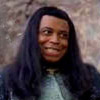| Welcome, Guest |
You have to register before you can post on our site.
|
| Forum Statistics |
» Members: 5,873
» Latest member: paxiom
» Forum threads: 6,007
» Forum posts: 86,235
Full Statistics
|
| Latest Threads |
Introduction
Forum: Presentation
Last Post: volumizing
2025-12-21, 10:29 PM
» Replies: 0
» Views: 55
|
The Bourne Identity - The...
Forum: Released
Last Post: Vlaflip
2025-12-21, 12:44 AM
» Replies: 39
» Views: 13,623
|
Hello!
Forum: Presentation
Last Post: CSchmidlapp
2025-12-20, 05:02 PM
» Replies: 1
» Views: 93
|
introduction
Forum: Presentation
Last Post: hunterzolomon
2025-12-20, 12:47 PM
» Replies: 0
» Views: 73
|
PDB's Random Projects
Forum: In progress
Last Post: EndlessUniverse
2025-12-20, 04:31 AM
» Replies: 23
» Views: 6,312
|
Shout Factory acquires Go...
Forum: Official and unofficial releases
Last Post: CSchmidlapp
2025-12-19, 10:41 PM
» Replies: 126
» Views: 37,466
|
Thank you and nice to mee...
Forum: Presentation
Last Post: Limboomer
2025-12-19, 08:08 PM
» Replies: 4
» Views: 141
|
"Reservoir Dogs" open mat...
Forum: Released
Last Post: Limboomer
2025-12-19, 07:57 PM
» Replies: 7
» Views: 2,823
|
Minority Report (2002) - ...
Forum: Released
Last Post: stwd4nder2
2025-12-19, 05:47 PM
» Replies: 8
» Views: 433
|
CBS Fox All Time Greats -...
Forum: Released
Last Post: Beber
2025-12-19, 03:13 AM
» Replies: 1
» Views: 136
|
|
|
| Hello |
|
Posted by: cps1 - 2019-04-19, 02:43 AM - Forum: Presentation
- Replies (2)
|
 |
Hello from Scotland.
I stumbled across this brillant forum with all of these amazing (and important) film preservation projects. I am blown away with the effort and craft that goes into 'fixing' those original theatrical versions.
I am just a learner but I'm looking forward to being a part of this community and contributing in any way I can to help with restorations.
I have a fast film collection (also film scores) that hopefully will come in handy to all members while fixing/restoration/re-editing of movies.
Thank you.
|

|
|
| Which calibration probe to choose? |
|
Posted by: Beber - 2019-04-17, 10:11 PM - Forum: General technical discussions
- Replies (4)
|
 |
Hey, guys.
Having an LCD for monitor and an OLED for TV, videos look quite different, so I'm considering buying a calibration probe so that both would look okay. How did you guys calibrate your PC monitors and TVs? Did you use a calibration probe and, if so, which one? I've been scrolling on this site (in French: https://www.guide-gestion-des-couleurs.c...metre.html), and I'm confused. Is there a difference between a PC monitor and a TV calibrationwise or do these probes work for both? I understand that these come with a calibration software, so a PC would have to be connected to the TV, which is okay for me.
|

|
|
| Best format for exporting from Resolve? |
|
Posted by: bronan - 2019-04-17, 03:31 AM - Forum: Converting, encoding, authoring
- Replies (24)
|
 |
So I have a Prores clip in Resolve I've done some work on, now its time to export. My goal is to get it encoded to 264, but the built in one doesnt leave much room for customizing. What's my best option for export for encoding with Simple x264 with the preferred settings? I was looking at the Uncompressed Quicktime formats but there's quite a few options and I wasn't sure what to pick.
|

|
|
| The Shining (1980) - UAR regraded |
|
Posted by: spoRv - 2019-04-16, 11:16 PM - Forum: Requests, proposals, help
- Replies (18)
|
 |
I've got the occasion to capture the Italian laserdisc; sadly, it has the last few minutes of side A corrupted... apart that, it is open matte 1.33:1 (more or less); I've noted it has quite a lot more image on top, while missing on bottom (in comparison to DVD); and, no pink tennis ball; so, why don't make an UAR regraded version?
http://screenshotcomparison.com/comparison/134066
status: prealpha (I can't get rid of the blueish blanket on the left side of the laserdisc - yet, at least)
Opinions?
(note: I know that I have at least another project to make right now, indeed this would eventually start later)
|

|
|
|